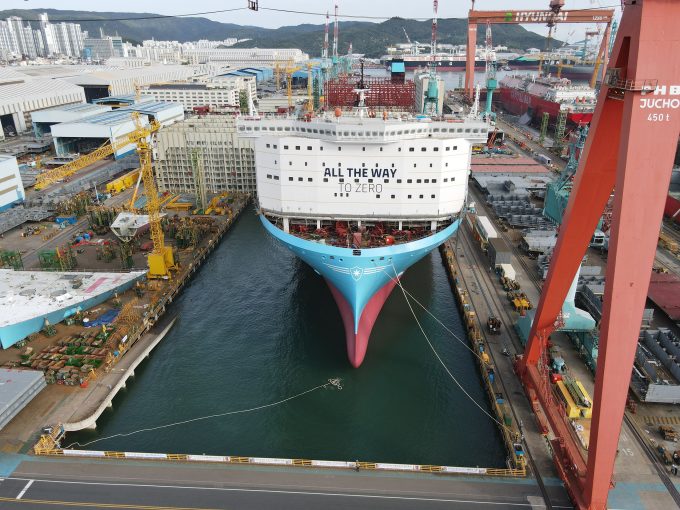Maersk raises surcharges as Red Sea risk expands and costs mount
Last week, Houthi chief Abdul Malik Al-Houthi said there would be a stepping-up of operations ...

Maersk today reported a net loss of $442m in the fourth quarter of last year, dragged down by a collapse of freight rates and its container liner division recording an operational loss of $920m.
However, the company said, higher rates and surcharges as a consequence of the Red Sea crisis would boost earnings, but CEO Vincent Clerc stressed that this was “not a bonanza” like the Covid boom.
He said it was “just a matter of time” before the threat of overcapacity from the huge number of newbuild deliveries overcame the impact of the Red Sea disruption.
“I don’t know how long we can hang onto the revenues we are getting today,” he said.
Indeed, the first quarter is looking much healthier for ocean carriers, with, for example, Japanese carrier ONE forecasting a net profit of $239m, compared with an $83m loss in the the last three months of 2023.
“In Q1 we will over-recover, compared with the straight cost of the transport…this will cushion earnings in the first quarter, but over time this is pushing inflation in our costs that will take some time to work out of the system,” said Mr Clerc.
He was referring to the cost of repositioning ships and the overhang of chartership costs as, and when, normal networks are resumed.
Mr Clerc advised that in terms of Asia-Europe contracts agreed at the end of November, when rates were low, the current diversion surcharges will have to come off as soon as ships returned to transiting the Suez Canal.
The situation is different, however, on the transpacific, where Mr Clerc noted that contract negotiations “only start to heat up” in March, so potentially some of the recent spot rate hikes could be baked into new deals.
Moreover, there remains around 30% of Maersk’s volumes exposed to the spot market, and these rates could stay elevated for a longer period following network normalisation.
Maersk’s consolidated group revenue in Q4 fell 34% year on year, to $11.7bn, with the contribution from its liner sector plummeting 47%, to $7.2bn, despite an 11% growth in liftings, to 6.2m teu. Its average freight rate fell 50% (55% on east-west trades) to just $962 per teu.
Meanwhile, its burgeoning Logistics & Services division was also impacted by lower rates and, despite higher volumes, revenue decreased, with ebit down 57% on the previous year, at $60m.
In the terminal sector, total volumes grew 3.2%, to 3,168,000 teu, with the star performers being the North American terminals, which recorded 11.8% growth on the same period of the previous year, due to “a strong market recovery”.
Revenue from terminals increased 2%, to $1bn, due to the volume increase, but was offset by a ‘normalisation’ of storage revenue, for an ebit of $234m, against $232m the year before.
Despite the negative quarter, Maersk still managed to meet its guidance, producing a group net profit for 2024 of $3.9bn, which nonetheless was down substantially on the previous year’s record $29bn profit.
It terms of the outlook, Mr Clerc admitted that Maersk’s full-year guidance, ranging from breakeven to an ebit loss of $5bn, “contained a lot of uncertainty” due to “significant oversupply challenges”, as well as the “duration and degree of the Red Sea disruption”.
Comment on this article